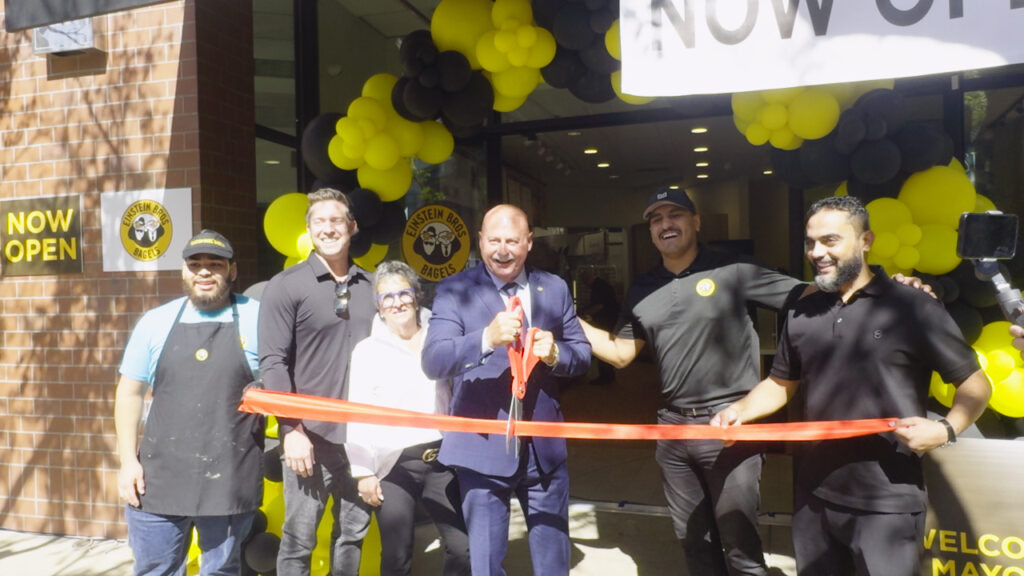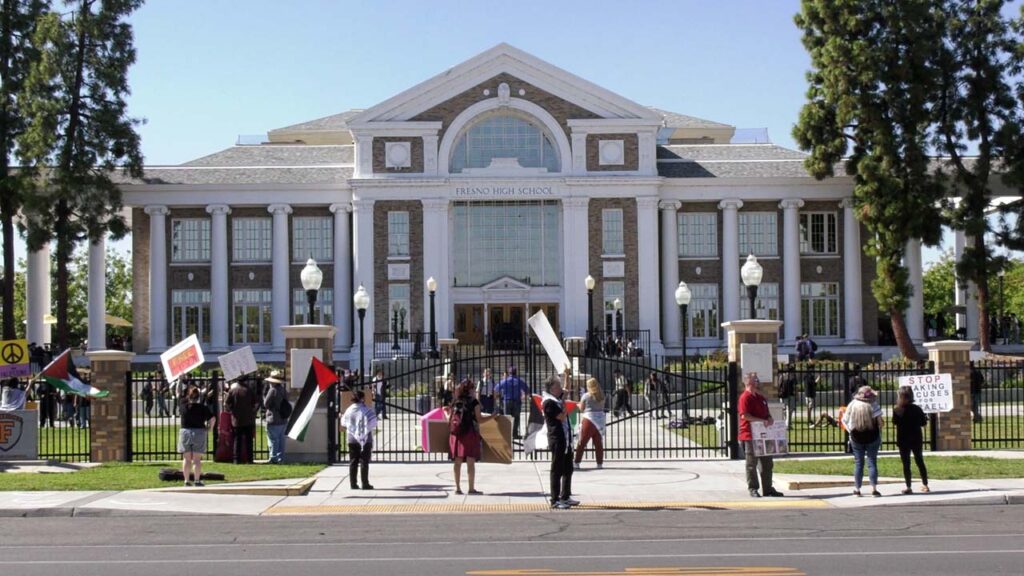Share
|
Getting your Trinity Audio player ready...
|
At the northern edge of Fresno’s suburban sprawl, one of California’s landmark state Supreme Court cases is about to get a major test.

Gregory Weaver
Fresnoland
Friant Ranch, a controversial plan for a new city near the shores of Millerton Lake, is up for review by the Fresno County Board of Supervisors once again.
The 2,500-home community has been in the works since April 1997, when future state Assembly Member Frank Bigelow met with Fresno County official Jeff Tweedie to discuss a 1,000-acre gated community on Bigelow’s old ranch land eight miles north of Fresno.
But despite Bigelow’s efforts, environmental lawsuits have stopped the subdivision from breaking ground over the last 25 years.
The last time the Board of Supervisors approved Friant Ranch, in 2011, the California Supreme Court overturned the supervisors’ decision, saying Bigelow and his partners failed to analyze the public health impacts of Friant Ranch’s increased car traffic and air pollution.
Now, more than a decade later, a revised environmental analysis of Friant Ranch, published in February, is making its way back to the supervisors’ chambers at the Fresno County Hall of Records.
The core part of the new environmental review called for by the state Supreme Court – an analysis of the public health impacts caused by the project – concludes that Friant Ranch will not have significant health effects on Fresno residents.
That conclusion is likely to be challenged.
Public letters submitted to Fresno County from the City of Fresno and an environmental lawyer challenged the accuracy of the environmental review, documents acquired by Fresnoland show.
Doug Carstens, a partner at one of the state’s top environmental law firms, called the document’s public health conclusions bogus.
Carstens said the key assumption that underlies Friant Ranch’s new environmental review – that 80% of the car trips caused by the development will be less than three miles – is unfounded.
“This is a sprawl project. This assumption just doesn’t make sense,” Carstens told Fresnoland in an interview. “It’s not a legally adequate environmental review. It needs an overhaul. Right now, it’s woefully deficient.”
Dennis Bacopulos, operations manager for Friant Ranch, L.P., did not respond to requests for comment. Fresno County Supervisor Steve Brandau, who expressed support for the project as recently as 2021, also did not respond to requests for comment.
Carstens said Friant Ranch’s developers must fully explain this assumption before the community’s environmental review is finalized and sent to the county board of supervisors for approval.

City of Fresno Questions Friant Ranch Development
In April, the city of Fresno raised similar concerns about the project’s air quality analysis. Industry-standard computer models show the community’s traffic impacts would be much larger than the developer’s estimates, said Fresno City Manager Georgeanne White in a letter to Fresno County.
In contrast to the developer’s assumption that 80% of the Friant Ranch resident’s trips would be less than three miles, White estimated in the letter that 69% of the project traffic would travel more than 20 miles. White also estimated that Friant Ranch residents would drive three times more miles per day than the average county resident.
Any changes to Friant Ranch’s 80% assumption could trigger new requirements for environmental mitigation measures, said Suzanne Durbin, a lawyer with Carstens’ law firm, Carstens, Black, & Minteer.
Even with the developer’s 80% assumption, the community was found to increase Fresno’s lifetime cancer risk by 17.5 in one million – which is close to the threshold of 20 in one million that would require new mitigation measures from the developer under state law, according to the environmental review.
In other areas of the state, like Southern California, the health risks of Friant Ranch would have already kicked in the requirement for mitigation. The San Joaquin Valley Air Pollution Control District allows developers to create twice as much cancer risk as permitted in Southern California, a similarly polluted air basin, according to the agency’s official 2023 CEQA guidance documents.
County Does Not Open Public Comment on New Water Deal, Sewage Disposal
Also included in the environmental review is a new water deal, which Fresno County did not take comment on from the public or water agencies. The 2016 deal, which was not analyzed when the Board of Supervisors originally approved Friant Ranch over a decade ago, allows Bigelow to bank a carryover water supply in Millerton Lake.
The county declined to reanalyze the water impacts because that was not part of what the Supreme Court ruled, a point of contention with White and other critics of the community’s analysis.
“The Court decision did not direct the County to revise any other sections of the original EIR,” said Michelle Avalos, county spokesperson, in an emailed statement.
But without further analysis, the new water deal has a crucial ambiguity, said White: one that could leave Friant Ranch residents vulnerable to water shortages in the future.
Friant Ranch’s water comes from Central Valley Project water rights owned by Lower Tule Irrigation District, a water district 90 miles south in Pixley. The deal allows up to 2,000 acre-feet of water to be purchased by Friant Ranch annually for $400 an acre-foot.
The agreement adds the ability for Friant Ranch to double its water transfer from Lower Tule and store up the 4,000 acre-feet of water in Millerton Lake as a carryover water supply for dry years. According to Provost and Pritchard, a prominent consulting firm in the Valley, these new provisions allow Friant Ranch’s water supply to weather multiple years of drought.

“The City suggests this be clarified in order to provide public disclosure of the water supply available to serve the project.” — Fresno City Manager Georgeanne White
But the way the water deal is structured, White said in the letter, leaves open a legal “interpretation” that Friant Ranch can only double down on delivered water from the federal water supply. So if, in the middle of a drought, federal deliveries are reduced by 75%, Friant Ranch can’t store 4,000 acre-feet of water in Millerton Lake, but instead only 1,000 acre-feet.
In such a case, the Ranch’s new carryover provision wouldn’t provide a four-year water supply but instead would only allow Friant Ranch to barely get by for a single year.
In the age of climate change and drought, such a case is rapidly becoming more common: the federal water deliveries Friant Ranch will use have dipped below 25% four times in the last decade: 2014, 2015, 2021, and 2022. Before 2014, it had happened once since 1966.
White said this uncertainty around Friant Ranch’s new carryover deal needs an explanation. “The City suggests this be clarified in order to provide public disclosure of the water supply available to serve the project,” White wrote.
Problems with the upstream water supply Friant Ranch will rely on have attracted attention before. In 2014 and 2015, Lower Tule’s federal water supply went completely dry. And this March, the district’s groundwater sustainability plan was rejected by state regulators.
In the case that Lower Tule’s federal water supply, and the carryover water supply, both run out, Lower Tule also agreed to make its “best effort” with the district’s “hydrologic resources” – such as legacy water rights and groundwater – to irrigate Friant Ranch.
Other parts of the environmental review that Fresno County did not allow the public to comment on include plans to dispose of Friant Ranch’s treated human sewage near Lost Lake Park and the San Joaquin River.
The county already gave a conditional use permit to Friant Ranch to release the sewage in 2014, but the county didn’t prepare an environmental impact report for sewage disposal. The sewage permit was rescinded after the 2020 state Supreme Court decision.
Before its disposal around the San Joaquin, the sewage is planned to be stored in a 25-acre abandoned mining pit next to a wildlife pond owned by the San Joaquin River Conservancy that Fresno County lists as a potential breeding habitat for California Tiger Salamander, an endangered species.
What Comes Next?
Friant Ranch’s developers, including Bigelow and Bacopulos, will now take the next few months to revise the Ranch’s environmental review. Then, the Fresno County Planning Commission and the Board of Supervisors will vote on it.
The last time Friant Ranch’s environmental review was released, it took 10 months to finalize the document and another six months for the Board of Supervisors to approve the subdivision. If this timeline holds, the Supervisors could vote on Friant Ranch around next summer.
The public can comment on the project for the foreseeable future, said Michelle Avalos, a spokesperson for the Fresno County Public Works Department. Comment letters will be accepted until the County Planning Commission votes on Friant Ranch, she said. A date for the planning commission to approve Friant Ranch has not been set yet.
“The public can continue to submit comments on the project until the Planning Commission meets,” Avalos said.
Seven public comment letters have already been filed with the county, including letters from Caltrans, the city of Fresno, and residents of Friant and the Millerton Lake Village Mobile Home Park, who oppose the project.
Public comments can be submitted to county official David Randall, who is overseeing Friant Ranch’s planning. His email is drandall@fresnocountyca.gov.
About the Author
Gregory Weaver is the environmental reporter for Fresnoland, a nonprofit news organization dedicated to making policy public.


















